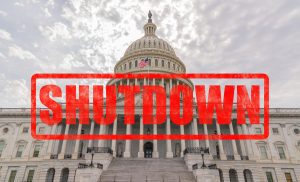When Congress passed the One Big Beautiful Bill Act (OBBBA) earlier this year, most of the headlines focused on tax cuts and business incentives. But tucked within the legislation are important changes to IRS information reporting rules—specifically, how and when organizations (including local governments) must issue Form 1099s.
These updates may sound minor, but they will affect nearly every city, county, district, and school finance department that processes payments to vendors, consultants, and contractors.
Let’s break down what’s changing and how your agency can prepare.
The Basics: What Changed Under OBBBA for 1099 Reporting
For decades, agencies have been required to issue Form 1099-NEC (for nonemployee compensation) or 1099-MISC (for things like rent and services) whenever total payments to a vendor exceeded $600 in a calendar year.
Starting with payments made after December 31, 2025 (that’s the 2026 reporting year), the OBBBA raises that threshold to $2,000, with future adjustments tied to inflation.
That means:
- Fewer 1099s will need to be issued for smaller payments.
- Fewer instances of backup withholding.
- A lighter administrative load for finance and accounting teams.
The legislation also reverses the prior 1099-K expansion, restoring the original $20,000 and 200-transaction threshold for third-party settlement reporting (like PayPal, Venmo, or Stripe). While this doesn’t typically affect government entities directly, it may simplify reporting for vendors and grant recipients that use those platforms.
Why It Matters for Local Governments
Local government agencies aren’t exempt from IRS information reporting rules. In fact, IRS Publication 1220 and other federal guidance explicitly require federal, state, and local agencies to file information returns for certain payments.
The OBBBA changes bring both benefits and new responsibilities for agencies:
Reduced Administrative Burden
You’ll issue fewer 1099s for small payments under $2,000—reducing form preparation, mailing, and e-filing volume. For agencies processing hundreds of small vendor payments, this could mean significant time and cost savings each January.
Simplified Backup Withholding
Backup withholding will now align with the new $2,000 threshold. This reduces the likelihood of needing to withhold on smaller, one-off payments to vendors missing a valid taxpayer identification number (TIN).
Transition Planning Is Key
These changes apply beginning with payments made in 2026, so the 2025 filing season (for 2025 payments) will still use the old $600 rule. Agencies should use 2025 to:
- Update vendor management and AP systems.
- Train staff on new thresholds.
- Communicate with vendors about the change.
Internal Controls Still Matter
Even though fewer 1099s will be required, recordkeeping and aggregation still count. You’ll still need to:
- Collect W-9s for all vendors.
- Aggregate payments across departments and funds.
- Monitor vendor totals to know when the $2,000 threshold is reached.
What Agencies Should Do Now
Here are a few practical steps to help your finance team get ahead:
Update your vendor onboarding process.
Continue collecting W-9s from every vendor, even those you think might not reach $2,000. You never know when additional payments might push them over the limit.
Check your ERP or accounting software.
Adjust your 1099 module settings so the system alerts you when total payments hit $2,000. This will prevent errors once the new rule kicks in.
Communicate the change internally.
Departments that process vendor invoices need to understand when and how 1099 thresholds apply. A brief internal memo or staff training before year-end can save hours of confusion later.
Work with your auditor or consultant.
Confirm that your processes and documentation meet IRS requirements. This will help ensure a smooth transition and avoid potential audit findings.
Key Takeaway
While the OBBBA 1099 reporting changes might not grab headlines, they mark an important shift for government finance operations. Raising the reporting threshold from $600 to $2,000 simplifies compliance—but it also requires agencies to update systems, train staff, and document policies before 2026.
By planning ahead now, your team can enter the next reporting cycle confident, compliant, and ready for fewer January headaches.
Need Help Adjusting Your Processes? Contact us today!




